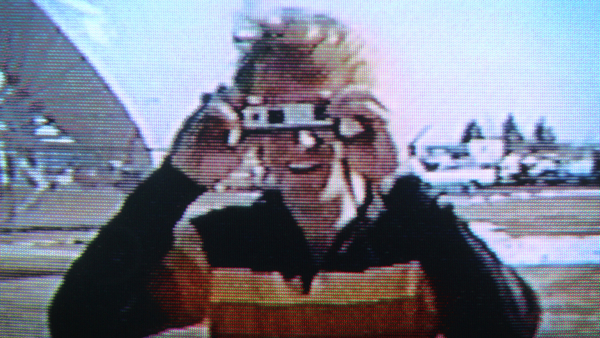Movie review by Greg Carlson
Filmmaker Brad Besser unpacks the unbelievable story of cult moviemaker/artist Trent Harris and his best known work in “Beaver Trilogy Part IV,” an engrossing examination of underground cinema and the siren song of Hollywood fame. Starting in 1979 and concluding in 1985, Harris completed three movies revolving around a teenage dreamer known as Groovin’ Gary. While testing equipment at a Salt Lake City television station, Harris happened upon Gary (whose real name was Richard Griffiths), an affable kid captivated by the thought of being recorded on camera. The interaction resulted in “The Beaver Kid,” a nonfiction account of that first meeting and a later performance of Olivia Newton-John’s “Please Don’t Keep Me Waiting,” made by Griffiths in drag as an alter-ego he called Olivia Newton-Dawn.
Among other things, the earnestness, sincerity, and vulnerability displayed by Griffiths as Newton-Dawn resonated with the storyteller in Harris, leading to a dramatized reinterpretation of the original movie. Titled “The Beaver Kid 2” and starring a young Sean Penn, who would later inject a bit of Groovin’ Gary into Jeff Spicoli, the second film walks a narrow line between respect for the original subject and a kind of ghoulish and exploitative fascination with Griffiths’ self-disclosure and naiveté. The latter charge, not directly confronted or deeply explored by Besser, manifests instead through a sense of gnawing guilt experienced by Harris.
Had “The Beaver Kid 2” concluded the odd saga of Groovin’ Gary, the tale might have been enough for the film’s fever dream status, but Harris cinematically returned to it one more time, making “The Orkly Kid” as his thesis at the American Film Institute. Shot on color film stock and featuring Crispin Glover in the lead role, the final chapter cemented the legend of Griffiths, now forgotten and out of contact with Harris. Although Besser plays fast and loose with his timeline, and punches up the melodrama with a comically heavy voiceover narration provided by Bill Hader, the best sections of “Beaver Trilogy Part IV” speculate on the feelings and motivations of Griffiths. Like all documentaries of this type, Besser saves a revelation or two for maximum impact.
Besser opts not to sustain the Griffiths thread as his movie’s sole subject, and turns to several of Harris’ other projects to pad the running time. Glover disciples who collected the fanzine “Mr. Density” in the pre-internet era of mom-and-pop video stores will especially enjoy the section on “Rubin and Ed,” the 1991 curiosity written and directed by Harris. The gonzo buddy movie, which tags along with Glover’s outré platform shoe enthusiast Rubin Farr as he seeks a final resting place for a frozen cat, was released too late to capitalize on a notorious 1987 “Late Night with David Letterman” appearance in which a fully committed Glover narrowly missed kicking the perplexed talk show host in the face.
“Beaver Trilogy Part IV” does not, unfortunately, include on-camera interviews with Penn and Glover, which for some will diminish much of the potential impact of the Groovin’ Gary metanarrative. A late section in which Besser recounts his own path to Harris, via the Utah filmmaking community, lacks the urgency of the movie’s previous content. The relationship of Harris to the Sundance Film Festival, which also factors in the saga, sparks additional interest, but like “Heavy Metal Parking Lot,” “Winnebago Man,” and the found footage curated by the Everything Is Terrible! team, the very best part of “Beaver Trilogy Part IV” is the way in which the hidden treasures of the weird, the outside, the independent, and the low and no-budget got around in a time before YouTube.
